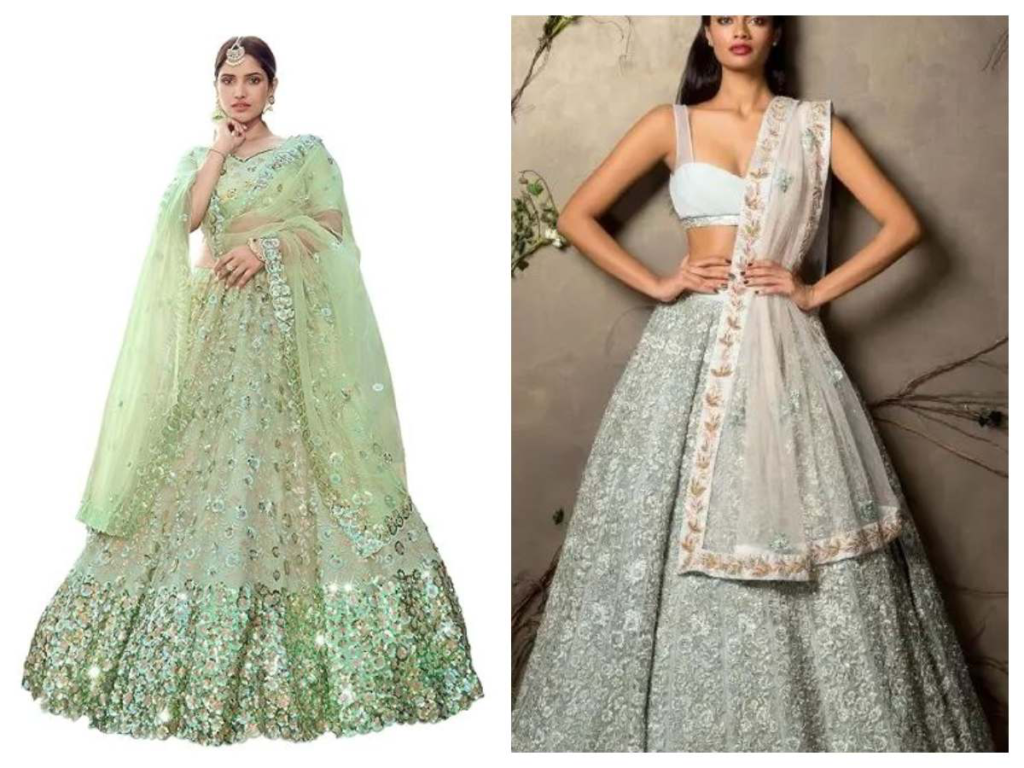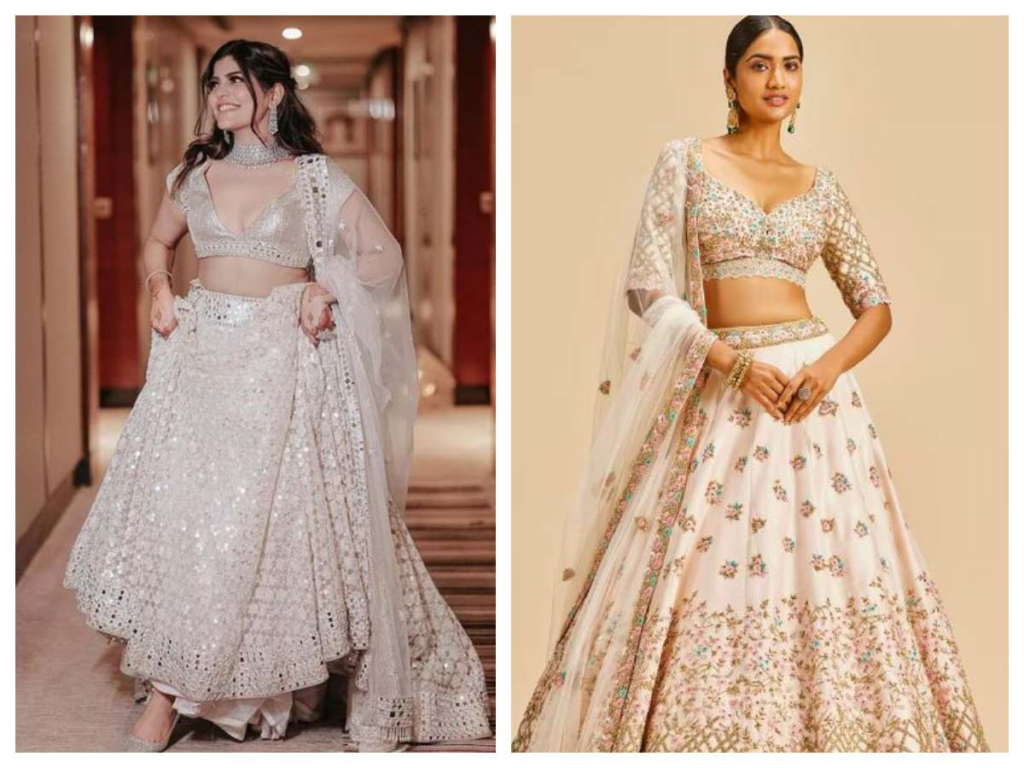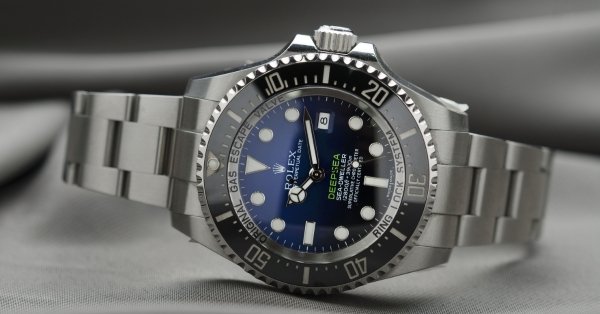Every fashion week, designers showcase their latest lehenga creations on the ramp Runway, meant to inspire and push boundaries. These high-fashion lehengas feature innovative silhouettes, fabrics, embroidery styles and colors that may not be wearable in real life but set trends for the upcoming season with Mirraw Online Store.
Recent runway shows have featured lehengas with exaggerated volumes, trains, ruffles and layers. Materials like plastic, metal chains, wires, tassels and fringe used liberally add drama. The embroidery tends to be oversized, 3D or geometrical. Colors are often bright neons or eye-catching color blocks.
While this makes for great photos and headlines, not many people can actually wear outfits like that for events! The average Indian bride still prefers elegant, flattering and comfortable lehengas over edgy, futuristic looks.
Key Elements to Translate from Runway Designs
However, certain elements from the runway can be adapted to create relevant, stylish lehengas:
Silhouettes:
Mermaid, peplum and long jacket style lehengas seen on ramps can inspire lehengas in real life too. The volume can be controlled to suit one’s body type.
Embroidery Placement:
Statement sleeves, backless cholis and heavy borders seen in ramp outfits can be incorporated in practical ensembles.
Colors:
Soft pastels, jewel tones and metallics can be chosen over neons. Accents of color through dupattas, borders or embroidery can make vibrant color palettes wearable.

Surface Textures:
3D flowers, ruffles, tassels and applique work can be used judiciously to create interest while keeping the lehenga light.
Fabrics:
Organza, silk and brocade can replace materials too stiff or shiny for everyday wear. Using the same fabric for choli and wedding lehenga lends harmony.
Adaptations for Real-Life Wearability
When translating high fashion to reality, wearability, comfort level and personal style must be kept in mind. Here are some practical adaptations:
Choose Light, Breathable Fabrics:
Stiff fabrics used in runway outfits would be very uncomfortable in reality. Flowy fabrics like georgette, chiffon and crepe are easier to carry off.
Balance Volumes & Silhouette Details:
Adding some flare to the lehenga skirt looks stylish yet allows movement. Long trains can be avoided for practicality. Instead of exaggerated sleeves, a well-fitted choli with unique neckline or back makes a statement.
Strategic Use of Embellishments:
Concentrating heavy embroidery, sequins or mirrors on the lehenga borders balances the look. The choli can be kept simple and the dupatta used to introduce color.
Customize for Skin Tone:
The color palette and embroidery design should be chosen keeping skin tone in mind. Yellow makes pale skin glow while pink flatters darker complexions.
Comfortable Undergarments:
Corsets, shapewear and petticoats should provide support without restricting movement. Padded bras prevent wardrobe malfunctions.
Manageable Accessories:
Statement earrings, maang tikka and a potli bag are easier to carry off than multi-layered necklaces. Hairstyle should be neat and jewelry minimal.

Practical Footwear:
Wedges and mojaris with broad straps are comfortable options for footwear compared to pencil heels.
Well-Fitted Outfits:
Taking accurate measurements and proper trials ensures the final lehenga is tailored to your body, allowing ease of movement. This also avoids last-minute adjustments.
Conclusion
While runway lehengas push creative boundaries, translating those designs into reality requires balancing stylish elements with comfort, flattering silhouettes, wearable fabrics and functional details. Keeping Indian sensibilities in mind while taking inspiration from global trends results in fashion-forward yet practical ensembles – the best of both worlds!



